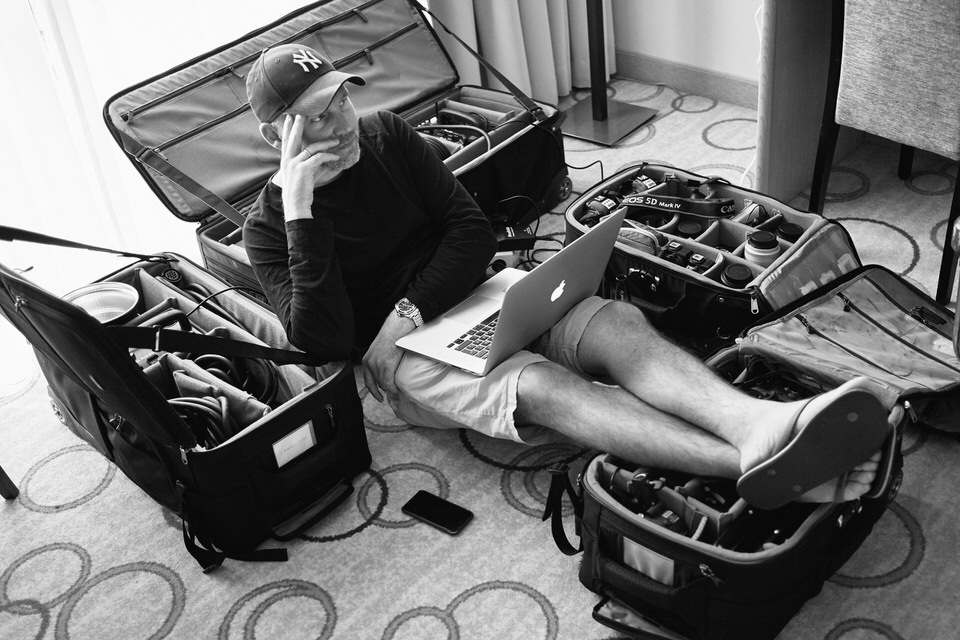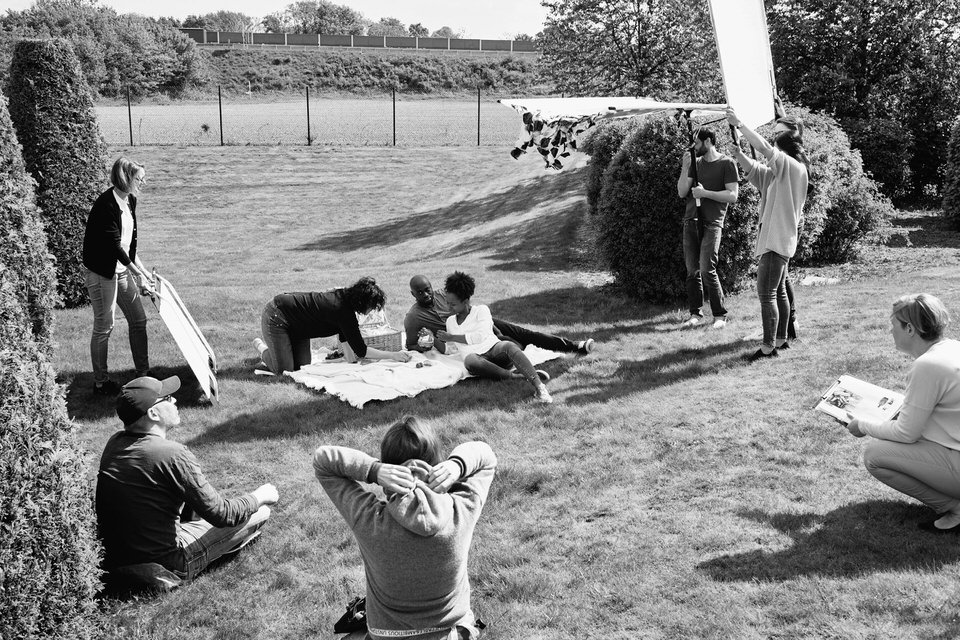Not Without My Assistant
People tend to assess situations, people and their status or function very quickly. This is very useful, otherwise, real-time action taking would hardly be possible. So, to be prejudiced is not fundamentally a bad thing in the first place.

However, by doing so one can overlook crucial people and their impact on the overall context. The secretary, who has been virtually managing an industrial site for the last 25 years, while the plant manager changes every 2 years. Or the golf caddy, who at first glance only functions as bag carrier, but actually has a fundamental function in the whole process and goes home depending on the league with a salary of a million euro. The most underestimated role in photography in my eyes is the assistant.
Similar to the golf caddy, there are in my view two basic misjudgments: I can only afford an assistant when I am good enough that my customers pay for an assistant and the assistant then carries my bag and drives the car. The opposite is true. You will never get really good if you do not have a good caddy. The caddy knows the degree of the course angle, what the weather is like, which wind is blowing from which direction, determines the exact distance to the hole and recommends a new club that you might have never tried yourself in a similar situation. A good assistant is indispensable as a good caddy. If he only wears the bags, I do not take advantage of the potential, do not understand the function of an assistant.

Of course, you have to clearly distinguish between the different areas of photography. There are areas where an assistant simply does not make sense. In the area of corporate and advertising photography, I believe an assistant is indispensable. Not only do I not just limit the collaboration to the shooting itself, but I also think of most of my assistants in recent years as key figures in my own photographic development.
Try JPEGmini Pro For Free Now!
I’m just over 40, which I consider an interesting age for photographers but also a very critical age. One tends to become more ponderous, to no longer follow every trend. This is the age at which many colleagues often struggle to keep up with technical and continual changes. When in 2005 digital photography spread rampantly across all areas of photography this was clearly visible. Many colleagues could not adapt, they simply fell by the wayside. Today the process is a bit subtler. If you are busy and have jobs lined up that keep you busy, you do not have the time to check out every new gadget. To assess which of the thousands of new market innovations could really be useful. You stick with the equipment and programs, you have always used or at least used more recently. I did not want to face this danger and decided to go another way. I give more and get a lot back.
My expectations for my assistants, who are all younger at this stage, is passion and reliability. I ask questions, I listen to every suggestion for improvement and if, in doubt, I check how the suggestion might benefit the team, the job or even move the entire project forward.

Sometimes it is the smallest of a technical idea that speeds up or streamlines the entire workflow. I will not forget the colleague who calculated how much time I could save each year by buying a faster printer that would pay for itself in just two months. Meanwhile, practically all equipment I own can be traced back to jointly made decisions with different assistants over the years. In return, I answer every question without batting an eyelid. Daily rates, strategies, customer service are no secrets in my team. My assistants are all self-employed and do not work exclusively for me. After a while, I even encourage them to go to work for themselves. There is one basic rule: if you have a request for a job on your own, it always takes priority. But please ensure that one of your colleagues is available to take over.
Equality plays a big role during a shoot. If a client or director does not greet my assistant on set, or even ignores him, it not only casts a rather unpleasant light on the company but also jeopardizes the entire atmosphere. I then make it my task to actively introduce my assistant and the whole team because no one gives 100% if treated disrespectfully. And my team would not be so loyal if I let the customer get away with behavior like this. Of course, everyone has their own tasks, but hierarchy does not benefit anyone especially when one spends more time with each other than with wife and children. Chemistry must just work and be maintained. The best case scenario is when everything just works by itself.

The understanding works so seamlessly that the interchangeable lens is handed over before I can formulate the question. My assistant sees the set, knows how we work, sees the pictures, sees the briefing, and is completely with me mentally.
So close is the relationship that I ask him for his support if I can’t get on with a particular scene and he then takes over the entire direction until I have found my feet again. This type of collaboration usually motivates my assistants immensely. They learn quickly, do not only see the final product but also are not afraid to ask how I ended up with a particular shot, why I have just chosen a specific detail or why I suddenly talk to a company executive about my son’s current art project. The end result is a self-confident young photographer who does not forget his roots and a photographer with a lot of work experience who does not lose touch.

My favorite example of the perfect outcome of this kind of collaboration is a private emergency from last year. We were on set just before the end of a busy first day of a two-day shoot when the phone rang. After I discussed possible options with the team ranging from having to cancel the job and finding a substitute, my assistant raised his hand. I would have never thrown him in the deep end or expected anything from him. I am not the type who would push anyone who is not convinced that he is ready. Five minutes later, we had presented a new situation for the customer. A decision from the customer and management on how to proceed was quickly made and my assistant was now the new photographer, who had only one concern: how do I get a suitable assistant for tomorrow. At that time, I was already on my way to my family.
Nils Hendrik Mueller / Braunschweig, Germany
www.nilshendrikmueller.de
https://www.instagram.com/nilshendrikmueller/
